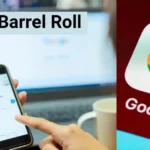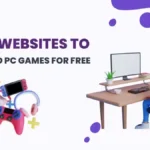The emergence of these delivery apps has had a big impact on how we shop. The use of these apps has grown along with the popularity of e-commerce and the shift of more consumers to online grocery shopping. The apps make it simple for users to order groceries from the convenience of their homes and have them delivered right to their door.
In this article, we will discuss the history of such apps, their benefits for buyers and businesses, popular examples of such applications, and the features that make these apps stand out. We will also discuss grocery delivery app development and the nuances involved in the development process.
When Did Grocery Delivery Apps Start to Develop?
The first app was developed in 2011 by Instacart. Since then, several other companies have followed suit, including Postmates, Uber Eats, and DoorDash. Due to a rising tendency among people to receive grocery store deliveries at their homes, the adoption of mobile apps has greatly expanded, especially during the COVID-19 pandemic.
Popularity and Why It Is Worth Thinking About Developing Such an App
Apps that deliver groceries are quite popular since they are convenient and save time. People can browse numerous stores and select the things they need with ease using these apps. Additionally, they can plan deliveries in accordance with their preferences, minimizing the necessity for actual store visits. With the growing popularity of online shopping and delivery services, developing a grocery delivery app is an investment that will pay off because it provides a way to enter a growing industry.
Benefits for Buyers and Businesses
Customers and businesses can both profit from grocery delivery apps in a number of ways. They provide users convenience energy and time savings. Customers can easily order goods online and have them delivered to their houses. These applications allow companies to increase their consumer base and generate extra income. Additionally, these apps assist in lowering expenses like rent and utilities that come with running a physical store.
Types of Applications

There are numerous delivery services available, and each one is distinctive in its own specific way. Following are the different categories of grocery delivery apps, along with a description of what makes each one special:
Aggregator
Due to the connections between aggregator apps and various grocery stores, customers can shop at numerous establishments. Their features:
- Wide selection of products
- Option to compare prices from different stores
- Same-day delivery
- Real-time order tracking
Store-based
These apps are developed by a specific grocery store or supermarket chain. Some of their features include:
- Access to exclusive deals and discounts
- Integration with loyalty programs
- Easy checkout process
- Store locator feature
Subscription-based
These apps offer customers a subscription model where they pay a monthly fee to receive groceries on a regular basis. Some of their features are:
- Personalized product recommendations
- Automatic delivery scheduling
- Option to skip or reschedule deliveries
- Option to change subscription plans
On-demand
Customers can use on-demand apps to order groceries and quickly receive them. The following are their characteristics:
- 24/7 availability
- Quick and efficient delivery
- Option to add special instructions for delivery
- Easy payment options
Hybrid
These apps combine features from aggregator, store-based, and subscription-based apps to offer a more comprehensive shopping experience. The features are:
- Access to multiple stores and products
- Integration with loyalty programs and subscriptions
- Personalized product recommendations
- Real-time order tracking
Depending on the grocery delivery app and its target demographic, the aforementioned functionalities may change. In the very competitive market for grocery delivery, the app can stand out by providing an exclusive set of qualities.
Popular Examples of Such Applications
There are several popular examples of grocery delivery applications. Some of them are:
Instacart: One of the most widely used applications for grocery delivery is Instacart. Customers can shop at different places thanks to a partnership with neighborhood groceries. Customers may contact their delivery drivers, schedule deliveries, and track their orders in real time.
Shipt: For same-day delivery services, Shipt works with companies like Target, Meijer, and H-E-B. Customers can browse the available goods, add them to their shopping cart, and arrange delivery.
FreshDirect: In certain US cities, there is a grocery store delivery service called FreshDirect. Fresh produce is ordered, and it is then delivered right to people’s homes.
Peapod: Customers can buy food, household goods, and other things through Peapod, an online grocery delivery service. Customers may track their orders in real-time and schedule deliveries.
Amazon Fresh: The ability to order goods online and have them delivered right to your home is provided by grocery store delivery service Amazon Fresh. Certain US and international cities may not have this service available.
These grocery delivery applications have gained popularity due to their convenience, ease of use, and ability to save time for customers.
How Grocery Delivery Apps Work
Customers can order food from neighboring supermarkets and have it delivered through these applications. They can shop at multiple stores, schedule deliveries, and add goods to their shopping carts. A company receives the order after it has been submitted by the software, and a delivery person picks up the products and brings them to the customer. Some applications may allow customers to monitor deliveries in real time.
Must-Have Features in a Grocery Delivery Application
A successful grocery delivery application should have certain features to provide a seamless and user-friendly experience. These features include:
- options for making payments
- adding goods to a “favorites” list
- a search tool
- posting reviews and ratings
- having a shopping cart
- being able to see prior orders
How to Develop a Grocery Delivery Application
To develop the application, you can follow these steps:
Market research: Understanding the demands and preferences of the target audience is essential for creating a successful delivery service application. Additionally, it is crucial to perform a thorough analysis of the competition, identifying its advantages and disadvantages.
Design: Create a user-friendly design that is easy to navigate and aesthetically pleasing. This includes creating wireframes, mockups, and prototypes.
Development: It is advised to employ a skilled development team with experience creating mobile applications for both iOS and Android platforms to develop the application. Additionally, it’s crucial to check that the team can ensure the application’s scalability and integration of numerous payment gateways.
Testing: Conduct thorough testing to ensure the application is bug-free and meets the requirements of both customers and businesses.
Deployment: Once the application is ready, deploy it to the app stores (Google Play Store and Apple App Store).
Post-launch: Continuously update and improve the application based on customer feedback and changing market trends.
Nuances in the Development of a Grocery Delivery Application
A good delivery service application must carefully take into account a number of important factors. The smooth integration of numerous payment gateways to offer customers a range of payment options is one of these elements. The software should be both iOS and Android device optimized, and it should be scalable to support a rising user base. To guarantee on-time and precise deliveries, it’s also crucial to provide a smooth connection between the app, the stores, and the delivery drivers.
How Long the Development Takes and the Cost
The amount of time it takes to create a grocery delivery app depends on the size of the development team and the complexity of the application. Creating an excellent app typically takes several months. A lot of factors, such as the development team’s experience, the duration of the process, and the app’s features, affect the cost of development. An expert team can create a product of the finest quality that satisfies the requirements of both clients and employers while ensuring a worthwhile return on the money spent.
Conclusion

Our approach to purchasing groceries has changed as a result of the expansion of grocery store delivery applications. Customers benefit from the unmatched convenience, adaptability, and time-saving features of these apps, while businesses benefit from new sources of income. The grocery delivery sector is anticipated to expand even further as technology continues to evolve, presenting more chances for entrepreneurs and business organizations. Businesses may build an app that stands out from the competition by studying the different kinds of grocery delivery applications, their special features, and the complex processes involved in their development. Creating such an app is a wise choice, whether you are a client or a company trying to profit from this growing sector.
You may also read: 25 Best Online Shopping Apps For 2023










